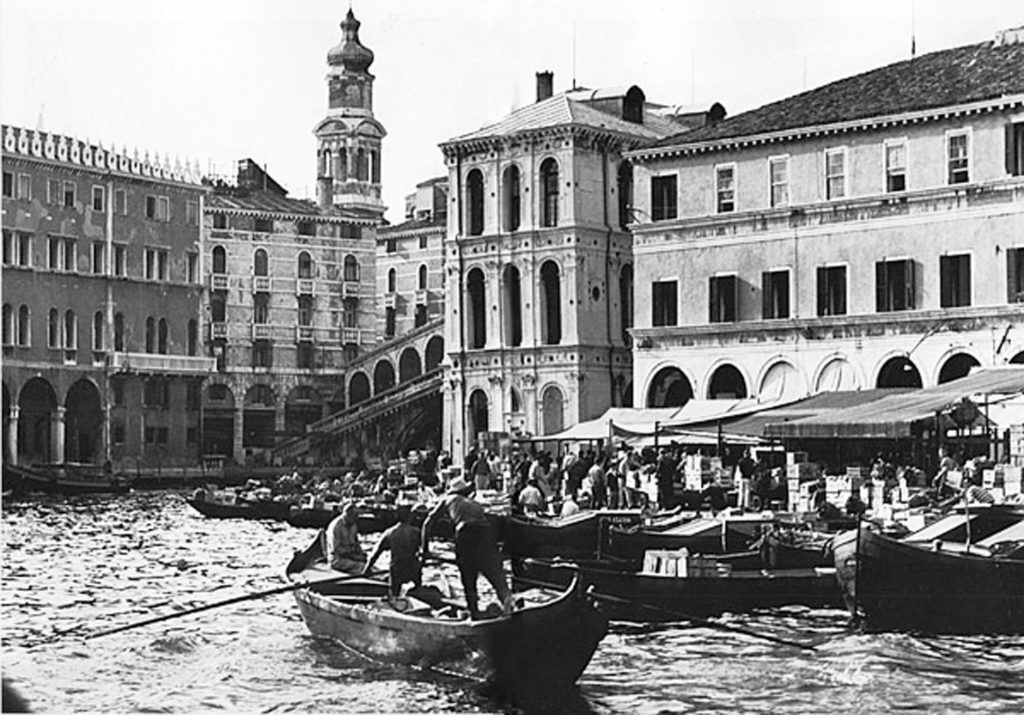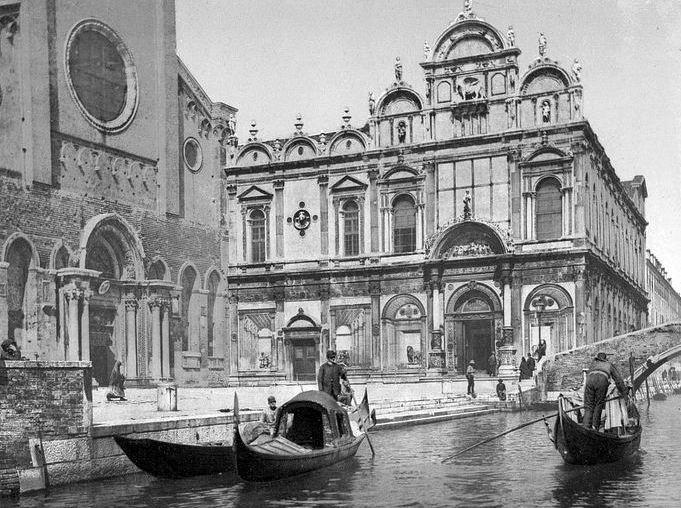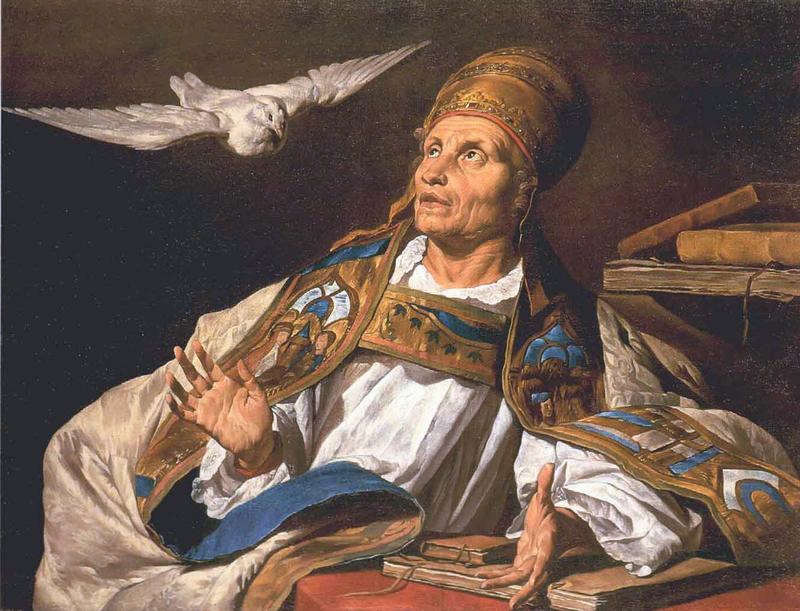Venice is best known today for its many canals, islands, culture and architecture. It has developed a romantic reputation built upon by countless movies and has a history dating from the fifth century. In fact, 2021 marks the 1600th birth of the city of Venice. There was a time when the city was a larger state and was once one of the greatest trading powers in European history. Venice was the European end of the Silk Road trade route which moved goods all the way from China making it at that time, the most cosmopolitan city in the world.
The history of the Republic of Venice traditionally begins with the foundation of the city at noon on Friday, March 25, in the year 421, with the laying of the first cornerstone of the San Giacomo di Rialto. The original population of the region consisted of people from nearby Roman cities such as Padua, Aquileia, Treviso, Altino and Concordia, which is now modern day Concordia Sagittaria. There were also individuals who had fled from waves of barbarians who had invaded the land beginning a century earlier. This is documented by the twelve founding families of Venice who trace their lineage back to the days of the Roman Empire and were elected the first Doge.
This part of Roman Italy was again overrun in the early 5th century by the Visigoths and by Attila the Hun, who sacked Altinum, a town on the mainland coast of the lagoon of Venice in 452. When the Lombards invaded the northeast region of the Italian peninsula in 568, the coastal lagoons of Venetia were known for their fishing and salt works. As the power of the Eastern Roman Empire, also known as the Byzantine Empire, dwindled in northern Italy in the late 7th century, the lagoon communities came together for mutual defense against the Lombards as the Duchy of Venetia.
Initially, the main settlement was elsewhere in the lagoon rather than on the islands which would later become the heart of Venice. One of the earliest settlements in that area, known as the Rivo Alto or Rialto group, was the island of Olivolo, now called San Pietro in Castello. Archaeological excavations have recovered Roman and Byzantine imperial seals showing that this island was already politically important by the fifth century.

Over the next few centuries, Venice developed as a trading center, doing business with the cultures of the Middle East, as well as the Eastern Roman Empire, with whom it remained close. In 992, Venice earned special trading rights with the Empire in return for accepting Byzantine sovereignty. The city grew richer and independence was gained in 1082. Venice retained its trading advantages with Byzantium by offering the use of its considerable navy. The government of Venice also developed during the 11th century with the once dictatorial Doge supplemented by officials and then by a council.
In the early 13th century, Venice seized on the chance to establish a physical trading empire. Venice had agreed to transport a Crusade to the Holy Land, but problems arose when the Crusaders were unable to pay. The heir of a deposed Byzantine emperor promised to pay Venice and convert to Christianity if it agreed to place him on the throne. Venice supported the initiative, but when the presumptive emperor failed to either pay or convert, he was soon violently dispatched! The Crusaders sieged and then captured Constantinople. Many treasures were removed to Venice, which then claimed a portion of the city as well as Crete and large areas of Greece as part of its empire.
The 14th and 15th centuries were a turbulent period. Venice warred with Genoa, a powerful trading rival. Its struggle reached a turning point with the Battle of Chioggia in 1380, which imposed limitations on Genoan trade. Other Italian city-states also attacked Venice and the Doges’ power was being eroded by the nobility. After heavy discussions, Venetian expansion targeted the Italian mainland with the capture of Vicenza, Verona, Padua and Udine. This era, from 1420 -1450, was the high point of Venetian wealth and power. The population even sprang back after the plague, which often traveled along trade routes.

Venice’s decline began in 1453, when Constantinople fell to the Ottoman Turks, whose expansion would threaten and successfully seize many of Venice’s eastern lands. In addition, Portuguese sailors had rounded Africa, opening another trading route to the east. Venetian expansion in Italy was brought to a halt when the Pope organized the League of Cambrai to challenge Venice, defeating the city. Although Venice ultimately regained the territory in Italy that it had initially lost, the negative impact upon its reputation as a powerful city-state was immense. Even victories such as the Battle of Lepanto over the Turks in 1571 did not halt the decline.
For a period of time, Venice successfully shifted its focus by manufacturing more and more goods, while promoting herself as the ideal, harmonious republic. The Pope placed Venice under a Papal Interdict in 1606 for trying priests in a secular court, but Venice forced the Pontiff to back down. This was one of its last victories. The 17th and 18th centuries saw the city-state decline as other powers secured Atlantic and African trade routes. Venice’s seaborne empire was lost. Although its economic importance had diminished, Venice thrived as a destination for wealthy visitors and was one of the most important stops on the Grand Tour, a 17th and 18th century custom of a trip through Europe undertaken by upper-class young European men. The Grand Tour flourished from 1660 until the advent of large-scale rail transport in the 1840s and served as an educational rite of passage.
Among the many features that drew visitors to the city were its theatres and music. Venice was the opera center of the world in the 17th century. In 1637, the San Canciano Theatre performed Europe’s first opera before a paying public. Elsewhere, operas were performed at that time only in the closed world of princely courts. During the 18th century, Venice became the most elegant and refined city in Europe, greatly influencing art, architecture and literature.

The Venetian Republic came to an end in 1797, when Napoleon’s French army forced the city to agree to a puppet government. It then looted the city of many of its greatest artworks. The defeat of Napoleon then saw Venice fall under Austrian rule. In 1846, Venice was linked to the mainland for the first time by way of a rail line and the number of tourists began to exceed the local population. In the 1860s, Venice became part of the new Kingdom of Italy and since then has been part of Italy.
Matilda…La Gran Contessa
One of the most well-known traditions in Venice is the celebration known as Carnevale. It began in 1268, but in time a law was passed to ban the wearing of masks, one of the most iconic features of the festival. By the time of the Renaissance, masks were back to being a fixture of Carnevale celebrations. By the 16th century, the popular Commedia d’Arte troupe performed slapstick comedy in the piazzas of Venice, while masked. By the 18th century, Venetians were permitted to wear masks for six months out of the year. With the Austrian conquest of Venice, mask-wearing, as well as Carnevale, were all but finished. It was brought back more a half century ago, when a group of Venetian artisans banded together to restart Carnevale and the event took off.
Art, music and sophistication have long defined Venice. It is home to the oldest film festival in the world, which began in 1932. The 78th installment of the red carpet event will take place in September, attended by Hollywood and international film elite, where the prestigious Golden Lion is awarded. There are also countless museums containing treasures from the Renaissance to modern art. The list of famous people who were born in Venice include Marco Polo, composers Antonio Vivaldi and Giovanni Gabriel; painters Canaletto, Bellini and Tintoretto; Giacomo Casanova and designer Pierre Cardin.
For most first time visitors to Italy, the lagoon city is one of the three must-see destinations, along with Rome and Florence, making Venice one of the top tourist destinations in the world.
The first official event of the 1,600th anniversary took place on March 25 with Mass at Saint Mark’s Basilica and later, all of the church bells throughout Venice were rung. RAI broadcasted a special program paying homage to the 16 centuries of the city with music, photos and the story of Venice.
There will be events marking the anniversary throughout the remainder of 2021 and into next year. Two events that are highly anticipated include the Venice Boat Fair from May 29 until June 6 and the Architecture Biennale, which begins on May 22.






